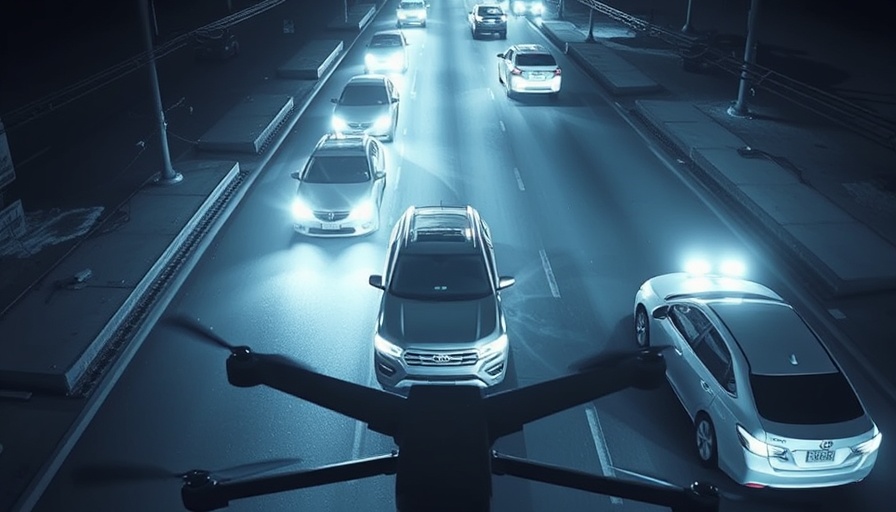
Shocking High-Speed Chase Reveals Gaps in Police Use of Force Training
The recent events in Anaheim, California, paint a vivid picture of police dynamics and the rapid decision-making processes officers face during critical incidents. With an alarming chase that exceeded 100 mph, the culmination of which ended in a police shooting, the situation highlighted the importance of effective police training and technology integration in law enforcement operations.
Understanding the Incident
On the night of April 16, officers responded to a gunshot victim at the Kona Inn Motel, setting off a chain reaction that led to a wild pursuit of the suspect, 51-year-old Danny Lee Cuelho. The subsequent chase lasted almost an hour as Cuelho recklessly traversed through various cities, reaching speeds that endangered both officers and civilians alike. With police officers actively attempting to take control of the situation through spike strips and PIT maneuvers, it’s paramount to explore the tools and methods they employed.
Integrating Technology for Enhanced Safety and Decision Making
The use of body cameras and real-time analytics during such incidents can be crucial for ensuring accountability and transparency. In this case, the body-worn cameras shed light on the chaotic moments leading to the shooting, illustrating how officers reacted under immense pressure. According to Michael Torres, an expert in law enforcement technology, incorporating AI-driven real-time analytics during high-speed pursuits can drastically improve decision-making by assessing the risk involved.
The Critical Role of Officer Training Programs
In light of this incident, there’s an urgent need to reevaluate police training programs focusing on use of force. The quick escalation from pursuit to shooting raises concerns about preparation and the adequacy of current training protocols. According to law enforcement policy advocates, enhancing training on de-escalation techniques could provide officers with additional resources to resolve conflicts without resorting to deadly force.
Balancing Community Safety and Public Accountability
While the use of force may be legally justified in certain scenarios, the public’s perception of police actions significantly affects community relations. Police agencies are often scrutinized for their operational decisions, especially in cases involving fatal outcomes. Ensuring the public is kept informed through transparent policies could bridge the trust gap between law enforcement and the communities they serve.
The Path Forward: Emphasizing Mental Health and Wellness Among Officers
As police departments navigate such harrowing events, addressing the mental health and wellness of officers also takes precedence. Police officer wellness programs have gained traction in recent years; agencies need to actively incorporate these initiatives to prepare officers for the emotional stress of handling high-pressure incidents. Mental health training can better equip law enforcement personnel to assess situations critically and with composure.
The incident in Anaheim serves as a terrifying reminder of the unpredictability of police work and underscores the necessity for continuous improvement in training, technology integration, and community relations. As lingering questions remain about the decisions made that day, both law enforcement leaders and policymakers must engage in thoughtful dialogue about best practices moving forward. Collectively, a commitment to reform, transparency, and officer wellness can optimize public safety and restore trust within the communities served.
 Add Row
Add Row  Add
Add 

 Add Element
Add Element 


Write A Comment